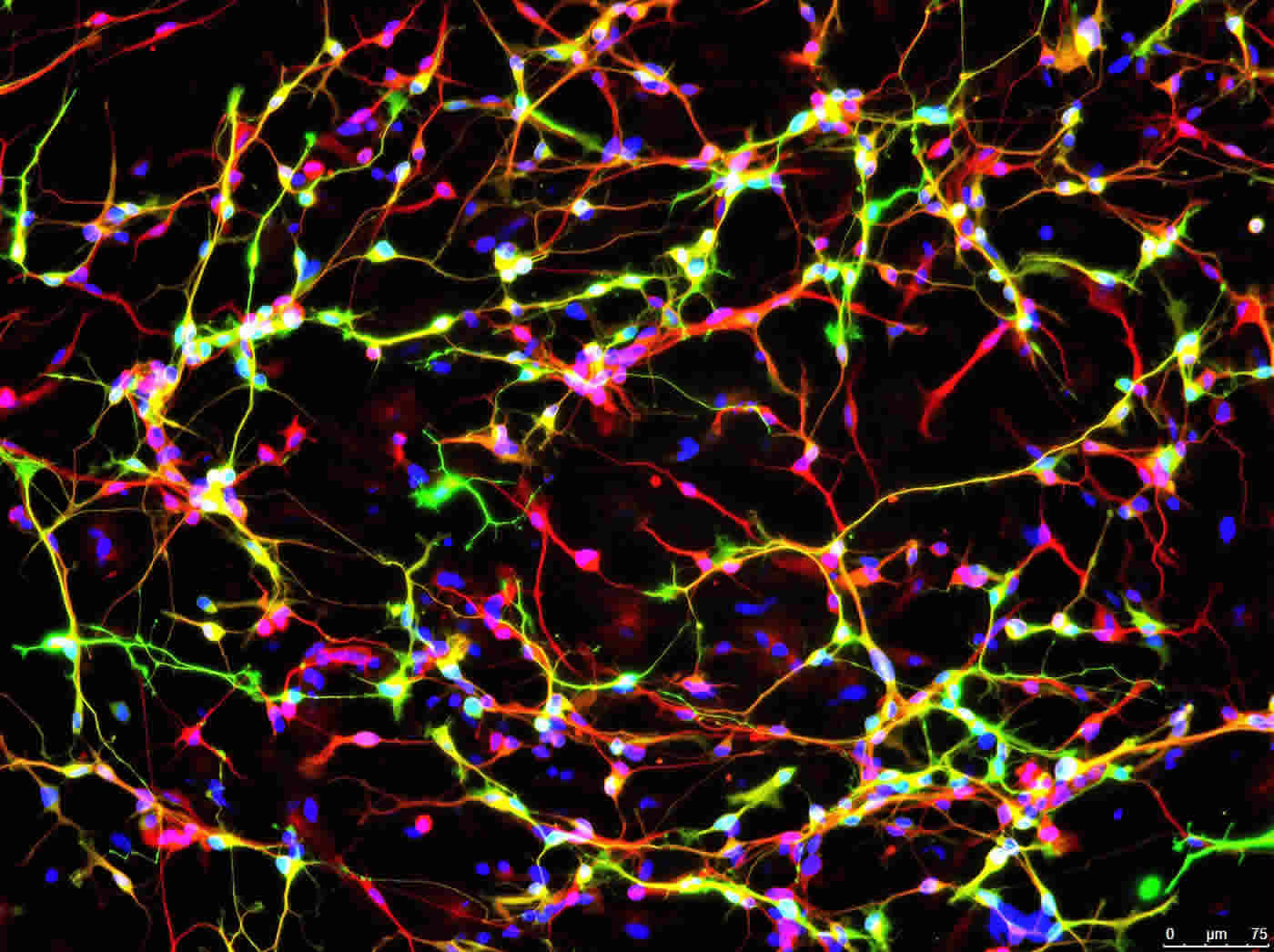Summary: New studies may help to explain the path from stem cells to dopamine neurons.
Source: Lund University.
The first transplantation of stem cells in patients with Parkinson’s disease is almost within reach. However, it remains a challenge for researchers to control stem cells accurately in the lab in order to achieve successful and functional stem cell therapies for patients.
“In our preclinical assessments of stem cell-derived dopamine neurons we noticed that the outcome in animal models varied dramatically, even though the cells were very similar at the time of transplantation. This has been frustrating and puzzling, and has significantly delayed the establishment of clinical cell production protocols,” says Malin Parmar who led the study conducted at Lund University as part of the EU network NeuroStemcellRepair.
The Lund experiments use modern global gene expression studies to better understand the path from a stem cell to a dopamine neuron. The data has been generated in close collaboration with a team of scientists at Karolinska Institute lead by Professor Thomas Perlmann, and is closely linked with a second study from the same cluster of scientists. The second study sheds new light on how dopamine neurons are formed during development, and what makes them different from other similar and neighbouring neurons.

This new insight has enabled a streamlined differentiation process resulting in pure populations of dopamine neurons of high quality.
“We have identified a specific set of markers that correlate with high dopaminergic yield and graft function after transplantation in animal models of Parkinson’s disease. Guided by this information, we have developed a better and more accurate methods for producing dopamine cells for clinical use in a reproducible way,” says first author Agnete Kirkeby.
The new results, published in two back-to-back articles in the leading journal in the field, Cell Stem Cell, propel stem cell therapy for Parkinson’s disease towards clinical application. The first transplants are expected to be only a few years away.
Source: Katrin Ståhl – Lund University
Image Source: NeuroscienceNews.com image is credited to University at Buffalo.
Original Research: Full open access research for “Predictive Markers Guide Differentiation to Improve Graft Outcome in Clinical Translation of hESC-Based Therapy for Parkinson’s Disease” by Agnete Kirkeby, Sara Nolbrant, Katarina Tiklova, Andreas Heuer, 3, Nigel Kee, Tiago Cardoso, Daniella Rylander Ottosson, Mariah J. Lelos, Pedro Rifes, Stephen B. Dunnett, Shane Grealish, Thomas Perlmann, and Malin Parmar in Cell Stem Cell. Published online October 27 2016 doi:10.1016/j.stem.2016.09.004
Abstract for “Single-Cell Analysis Reveals a Close Relationship between Differentiating Dopamine and Subthalamic Nucleus Neuronal Lineages” by Nigel Kee, Nikolaos Volakakis, Agnete Kirkeby, Lina Dahl, Helena Storvall, Sara Nolbrant, Laura Lahti, Åsa K. Björklund, Linda Gillberg, Eliza Joodmardi, Rickard Sandberg, Malin Parmar, and Thomas Perlmann in Cell Stem Cell. Published online October 27 2016 doi:10.1016/j.stem.2016.10.003
[cbtabs][cbtab title=”MLA”]Lund University “Breakthrough in the Production of Dopamine Neurons for Parkinson’s.” NeuroscienceNews. NeuroscienceNews, 28 October 2016.
<https://neurosciencenews.com/parkinsons-dopamine-neurons-5382/>.[/cbtab][cbtab title=”APA”]Lund University (2016, October 28). Breakthrough in the Production of Dopamine Neurons for Parkinson’s. NeuroscienceNew. Retrieved October 28, 2016 from https://neurosciencenews.com/parkinsons-dopamine-neurons-5382/[/cbtab][cbtab title=”Chicago”]Lund University “Breakthrough in the Production of Dopamine Neurons for Parkinson’s.” https://neurosciencenews.com/parkinsons-dopamine-neurons-5382/ (accessed October 28, 2016).[/cbtab][/cbtabs]
Abstract
Predictive Markers Guide Differentiation to Improve Graft Outcome in Clinical Translation of hESC-Based Therapy for Parkinson’s Disease
Stem cell treatments for neurodegenerative diseases are expected to reach clinical trials soon. Most of the approaches currently under development involve transplantation of immature progenitors that subsequently undergo phenotypic and functional maturation in vivo, and predicting the long-term graft outcome already at the progenitor stage remains a challenge. Here, we took an unbiased approach to identify predictive markers expressed in dopamine neuron progenitors that correlate with graft outcome in an animal model of Parkinson’s disease through gene expression analysis of >30 batches of grafted human embryonic stem cell (hESC)-derived progenitors. We found that many of the commonly used markers did not accurately predict in vivo subtype-specific maturation. Instead, we identified a specific set of markers associated with the caudal midbrain that correlate with high dopaminergic yield after transplantation in vivo. Using these markers, we developed a good manufacturing practice (GMP) differentiation protocol for highly efficient and reproducible production of transplantable dopamine progenitors from hESCs.
“Predictive Markers Guide Differentiation to Improve Graft Outcome in Clinical Translation of hESC-Based Therapy for Parkinson’s Disease” by Agnete Kirkeby, Sara Nolbrant, Katarina Tiklova, Andreas Heuer, 3, Nigel Kee, Tiago Cardoso, Daniella Rylander Ottosson, Mariah J. Lelos, Pedro Rifes, Stephen B. Dunnett, Shane Grealish, Thomas Perlmann, and Malin Parmar in Cell Stem Cell. Published online October 27 2016 doi:10.1016/j.stem.2016.09.004
Abstract
Single-Cell Analysis Reveals a Close Relationship between Differentiating Dopamine and Subthalamic Nucleus Neuronal Lineages
Stem cell engineering and grafting of mesencephalic dopamine (mesDA) neurons is a promising strategy for brain repair in Parkinson’s disease (PD). Refinement of differentiation protocols to optimize this approach will require deeper understanding of mesDA neuron development. Here, we studied this process using transcriptome-wide single-cell RNA sequencing of mouse neural progenitors expressing the mesDA neuron determinant Lmx1a. This approach resolved the differentiation of mesDA and neighboring neuronal lineages and revealed a remarkably close relationship between developing mesDA and subthalamic nucleus (STN) neurons, while also highlighting a distinct transcription factor set that can distinguish between them. While previous hESC mesDA differentiation protocols have relied on markers that are shared between the two lineages, we found that application of these highlighted markers can help to refine current stem cell engineering protocols, increasing the proportion of appropriately patterned mesDA progenitors. Our results, therefore, have important implications for cell replacement therapy in PD.
“Single-Cell Analysis Reveals a Close Relationship between Differentiating Dopamine and Subthalamic Nucleus Neuronal Lineages” by Nigel Kee, Nikolaos Volakakis, Agnete Kirkeby, Lina Dahl, Helena Storvall, Sara Nolbrant, Laura Lahti, Åsa K. Björklund, Linda Gillberg, Eliza Joodmardi, Rickard Sandberg, Malin Parmar, and Thomas Perlmann in Cell Stem Cell. Published online October 27 2016 doi:10.1016/j.stem.2016.10.003







